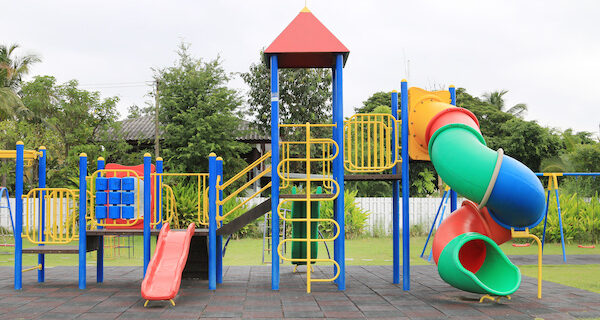Playgrounds With Purpose: Shaping Childhood & Community Health

As concerns about children’s screen time and mental health continue to rise, playgrounds are no longer viewed as just recreational amenities—they’re being reimagined as tools that support social-emotional development, mental well-being, and inclusive community-building. Research shows that children in the U.S. between the ages of 8 and 18 spend an average of 7.5 hours a day watching or using screens. With kids spending significant time online, the need for meaningful, outdoor, interactive play has never been more urgent. Yet, abundant green space doesn’t automatically translate to better community health; it’s the quality and intentionality of those spaces that make the difference.
To truly support mental well-being, parks must be thoughtfully designed with psychological benefits in mind. This shift requires city leaders and facility managers to rethink public space as an active tool for wellness and connection.
Playgrounds are at the forefront of this evolution. The most impactful designs today do more than promote physical activity—they cultivate emotional resilience, sensory engagement, and peer connection. These next-generation play environments reflect a broader movement in public space planning, prioritizing children’s mental and emotional development as much as their physical growth.
A New Standard For Public Space Planning
The growing prioritization of mental health in childhood directly shapes the future of public space planning. Communities are increasingly demanding outdoor environments that support wellness, not just for children but for families as a whole. In response, designers and city planners are integrating social and emotional learning (SEL)-informed design principles into parks and public areas to ensure children have access to more than passive recreation.
This shift has led to “interactive public spaces,” which blend play, nature, and technology to create meaningful experiences. In playgrounds, this may include adaptive equipment for children with disabilities, digital features promoting movement and curiosity, and layouts encouraging group interaction. The data collected from these digitally enhanced environments also gives urban planners actionable insights on how families use public spaces, informing future infrastructure decisions to have an even greater impact on communities.
Designing For Emotional Well-Being & Connection
Modern playgrounds are increasingly shaped by research that links nature-based and sensory-rich environments with improvements in children’s mood, behavior, and cognitive function.
A sensory-rich playground is intentionally designed to engage a child’s senses in meaningful ways, often drawing inspiration from the natural world.
These spaces include a variety of textures, sounds, and movement opportunities—like sand, wood, water, and natural stone—that encourage hands-on exploration. Features like interactive water elements, musical components, climbing structures, and shaded areas help support sensory development and create a calming but still exciting environment. Nature-inspired materials and layouts make these playgrounds feel intuitive and welcoming, offering all children—including those with sensory processing needs—a place to play, regulate, and connect with others.
Beyond calming, these environments teach children to navigate emotions, build empathy, and engage in collaborative play, foundational elements of SEL development. In fact, according to the Child Mind Institute, natural environments have been linked to improved attention and focus in kids, further underscoring the value of play structures that create outdoor world experiences. Whether through cooperative games, interactive water features, or inclusive group structures, children develop vital interpersonal skills that support long-term mental health.
Building Stronger Communities Through Play Spaces
The presence of mentally enriching, emotionally supportive playgrounds is not just good for kids; it’s good for entire communities. Access to green space and play has been consistently linked with lower stress levels, reduced depression, and anxiety symptoms. Studies even show that living near green spaces has been associated with reduced symptoms of anxiety and depression in younger children from two to five years old. These benefits extend to parents, caregivers, and surrounding neighborhoods, underscoring the role of play in building connected, resilient communities.
In this way, playgrounds invite interactions that foster a sense of belonging and serve as accessible spaces for wellness. As cities rethink how to support public health through design, playgrounds are increasingly viewed as essential city infrastructures, on par with schools, libraries, and transportation.
Planners and community leaders must create public spaces intentionally designed to support physical activity and mental health. By integrating sensory-rich features, inclusive design, and opportunities for unstructured social play, playgrounds can become powerful platforms for social-emotional learning and psychological well-being.
These spaces are no longer “nice-to-have” amenities, they are critical factors that reflect a community’s future values and investment. As urban areas continue to evolve, those who lead with a child-first mindset—grounded in research, equity, and wellness—will build healthier spaces and stronger, more resilient communities.
By Brett Kidd
Brett Kidd is the Vice President of Global Sales at Little Tikes Commercial, PlayPower Inc. Kidd holds a degree from Kentucky Wesleyan College and brings experience from previous roles at Xccent Play! and Reviva Inc. Throughout these roles, Brett has a robust skill set that includes Account Management, Strategic Planning, Sales, Sales Management, Marketing, and more.

